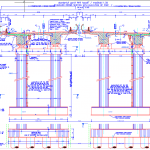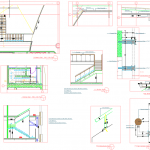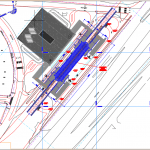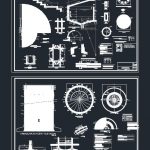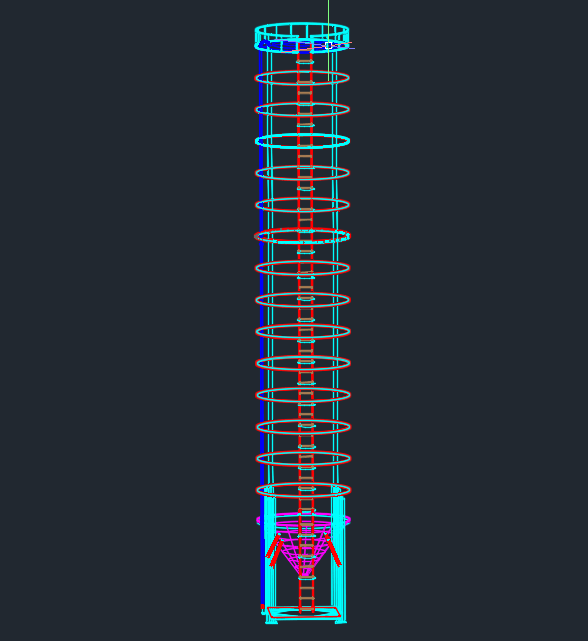
500 Tons Silo 3D Frame – Autocad Drawing
4 May 2025Table of Contents
500 Tons Silo 3D Frame – Autocad Drawing
In today’s fast-paced industrial and agricultural environments, silo structures have become indispensable for the storage and management of bulk materials. From farms to factories, silos ensure safe, efficient, and long-term storage for everything from grains to cement and biomass. Understanding how silo structures work, their different types, and how they’re designed can help businesses make smarter infrastructure decisions.
What Are Silo Structures?
A silo structure is a vertical or horizontal container specifically engineered for storing bulk solids or powders in large quantities. These structures are typically constructed from reinforced concrete, steel, or fiberglass, and are built to handle internal pressures, material flow challenges, and environmental exposure.
They are especially common in sectors where material storage, handling efficiency, and contamination prevention are critical.
Main Types of Silo Structures
Different industries require different storage solutions, and silos come in several forms:
1. Vertical (Tower) Silos
-
Material: Concrete, steel, or glass-fused steel
-
Use: Grain, cement, plastic pellets, or powdered chemicals
-
Advantage: Small footprint with high-volume capacity; gravity discharge reduces energy usage.
2. Horizontal (Bunker) Silos
-
Material: Reinforced concrete or steel walls with an open top
-
Use: Silage, forage, or aggregates
-
Advantage: Easy loading/unloading using loaders or conveyors; ideal for high-volume, short-term storage.
3. Bag and Temporary Silos
-
Material: Heavy-duty plastic tubing
-
Use: Seasonal storage for grains or silage
-
Advantage: Low-cost, mobile, and scalable for variable storage needs.
Silo Structure Design Essentials
A well-designed silo prevents material blockage, uneven flow, or structural damage. Key design factors include:
-
Type of material stored (powdery, granular, fibrous, cohesive)
-
Discharge method (center, side, funnel-flow, or mass-flow)
-
Internal pressure and material weight
-
Venting, aeration, and humidity control
-
Foundation type based on soil bearing capacity
-
Wind and seismic load resistance
Modern silos are often equipped with sensors, automated discharge systems, and anti-corrosion coatings to enhance performance and lifespan.
Where Are Silos Used?
1. Agriculture
-
Grain silos help preserve moisture content and protect against pests.
-
Used to store wheat, corn, barley, and animal feed.
2. Construction
-
Cement silos support batching plants and dry-mix production.
-
Store cement, lime, fly ash, and sand.
3. Energy and Industry
-
Biomass and wood pellet silos used in energy plants.
-
Plastic and chemical silos used in manufacturing plants for raw materials.
Why Silos Are Crucial
-
Maximize vertical space and reduce land usage
-
Improve material handling efficiency with automated systems
-
Preserve product quality by maintaining consistent environmental conditions
-
Enhance safety by containing potentially hazardous materials
-
Enable batch processing in industrial workflows
Sustainable and Smart Silo Solutions
With the rise of smart industry practices, silos now integrate with digital systems for real-time monitoring. IoT-connected sensors track levels, temperature, and humidity, offering predictive maintenance and better stock management. Moreover, silos constructed from eco-friendly materials or using modular design support faster installation and reduced environmental impact.
Conclusion
Silo structures are much more than storage tanks—they are critical components of modern supply chains and production lines. Whether for a farm or a factory, choosing the right silo design ensures safer operations, cost savings, and better material control. If you’re planning to install or upgrade a silo system, working with experienced structural engineers and selecting materials suitable for your storage requirements is key to long-term success.
To download more Free Autocad Files you can visit www.cadtemplates.org


